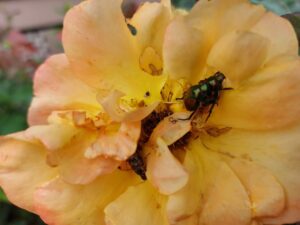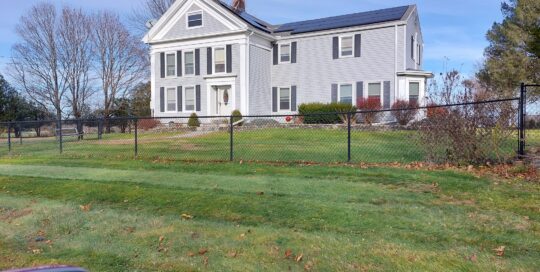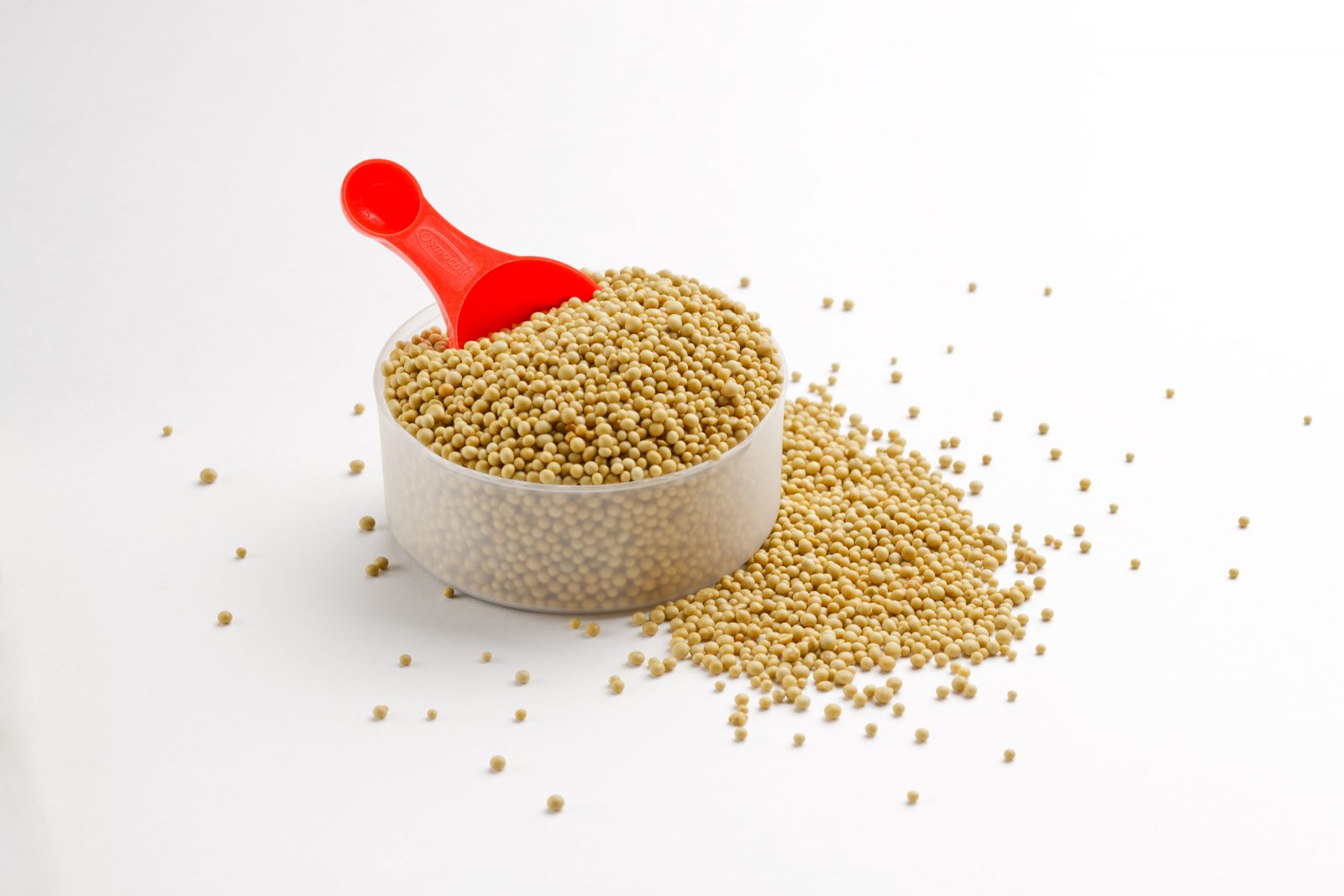Japanese Beetles In The Rose Garden
Views: 1204

Hi, Marci Martin here, your PlantersPlace.com rose blogger. Today, we’ll talk about Japanese Beetles and their relatives, all the other scarab beetles.
A Little History
Japanese beetles were first discovered in the United States in 1916 in New Jersey. No one really knows how they got here, but in Japan they were never a major pest. Probably they had natural enemies there. They are considered a major invasive species here in this country. They are now battled in all the Eastern United States, into the Midwest and continuing to move westward. The only eastern state not bothered by these pests is Florida.
By 1934, my state of Connecticut was completely infested when the hot weather hit in July, including the Elizabeth Park Rose Garden which opened to the public in June of 1904 and is America’s oldest municipal rose garden. Everything there was crawling with beetles and the City of Hartford and the Parks Department was very concerned because the beautiful garden was being destroyed by the beetles’ constant feeding, and the American Rose Society was supposed to arrive the following spring for a convention. They tried every insecticide known at the time without any success and finally applied Lead Arsenate to the ground. My friend, Rich Cowles, who is an entomologist with the State of Connecticut told me that this stuff is most likely still in the ground, almost 125 years later.
Japanese Beetle Life Cycle
Japanese beetles (Popillia japonica) spend most of their lives as grubs underground eating grass roots. A large infestation can destroy lawns. They begin as an egg laid by a female beetle around the first of August. This begins their life of about one year. The tiny white grubs eat any roots in their way and they grow very fast. By the arrival of winter, they have burrowed down in the soil by four or five inches to winter over.
When the soil warms in the spring, the white grubs work their way back up to the surface where we find them when we are planting in the spring. Whenever I find them I squish them between my gloved fingers or pop them with my spade. At some point they stop feeding and pupate for awhile underground until the summer heat arrives. They used to show up around July 4th, but as our climate has warmed, I now start seeing them before the middle of June. The adults are starving and also very interested in reproducing. Undisturbed, they will live from 30-45 days, the females will lay eggs, and that completes their life cycle.
Controlling Japanese Beetles
These brightly-colored pests and their relatives, the hybrid scarab beetles, leave really horrible devastation in their wake. They skeletonize foliage not just in the rose garden, but fruit trees, grape vines, vegetable leaves, fruits in orchards…nothing seems to be omitted by their insatiable appetite. Spraying insecticide on them doesn’t seem to be of much help because you may knock off a bunch of them, but the next day another million seem to show up. There are some other things you can do to help control them.
When we moved here 5 years ago, I put down Milky Spore Disease (paenivacillus papilliae). It’s a powder that I applied by spoonfuls on the lawns and gardens every four square feet the first week of August when the baby grubs are hatching underground and are ravenously hungry. As the grublets move through the soil they ingest the spores. The spores then multiply inside the grubs’ bodies and make them swell until they explode which spreads more milky spore around. This treatment lasts for a very long time. I had excellent results with this treatment in my Windsor gardens because it was a big area distant from neighbors’ yards. Here in Suffield, our yards are close together, so the beetles fly in from all over.
Control
Don’t use Beetle Traps unless you can put them far away from your garden! These traps have a strong sex attractant and will pull these nasty bugs in from half a mile away!
Drowning them in soapy water is a good control method. Go out to the garden early in the morning when it’s cooler and the beetles are not so active. I use a clean spaghetti sauce jar half full of water with a little squirt of dish detergent in it. The soap makes the water more slippery. Hold the jar under your rose and gently tap the bloom. The beetles instinctively go straight down…into your jar. They will slip beneath the surface of the water and drown. When you have a jar of dead beetles, dig a hole someplace and bury them.
One wonderful thing that has happened over the years is that some of the birds have discovered Japanese Beetles! I wrote about this in my blog at plantersplace.com ‘Japanese Beetles and the Avian Air Force Brigade!’ I’ve been watching this phenomenon for at least the last ten years. English Sparrows are combing my gardens daily for the beetles which they crunch up and feed to their waiting fledgling babies. I love sitting on the deck in the evening and watching them cleaning out my blooms. This is a wonderful thing for all of us gardeners; the birds have learned that they enjoy one of our worst pets. Do what you can to attract birds to your garden! They can be a major help.
Meet Marci Martin
Marci Martin has loved roses for as long as she can remember. From the time she was a little girl, she was fascinated with how…
Marci's Recent Posts

Roses and Friends at Race Point Lighthouse










